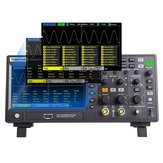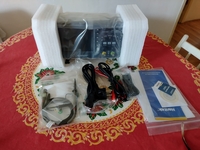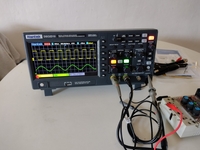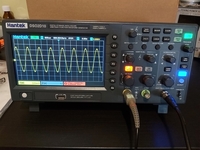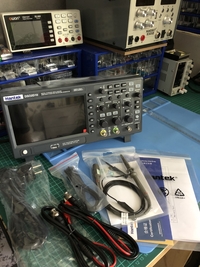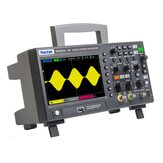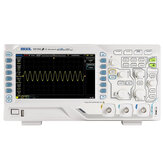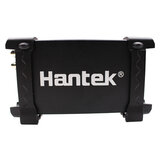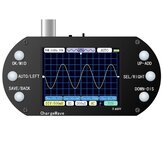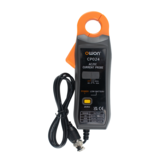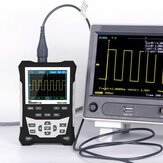Customer Reviews
- All Reviews (201)
- Image (31)
- Video (0)
A part of the review has been auto-translated.
-
26/11/2021
A good beginners scope, but if you have the money go with a rigol og siglent scope! This way you dont have to upgrade your scope when you become a more advanced user. Just rember to buy another probe as it only comes with one. I recommend the pp-150. Also, dont bother with buying the 150mhz model as you can hack this to 150mhz easily, the pp-150 probes are also good up to more than 150mhz. I would also recommending adding a fan inside the unit and heatsinks to the two chips inside. This way it will be more consistent over time, since the higher temps wont cause it to drift over time. This way you can also OC it and get more out of the fft and it will act more snappier. A guy named davidAlfa made these hacks, you can find it on his YT-channel or on the eev forum. On one of his videoes he has a link to his google drive where the different hacks are listed! On the last three pictures you can see that I added a fan to the 5v rail on the psu and that I used a nut and bolt to connect the chips to the metal case for better transfer of heat with some thermal-paste. Shipping is also very fast!
Comments (4)Show Original -
24/12/2020
Early days to give a complete appraisal, however did get familiar over these few days, and I would say it's not too bad for a budget Digital Oscilloscope and signal generator. The display is visually good clear and bright, Graticule and signal wave-forms provide the correct readings, also the read-outs are very close to the known input level; calibration also is spot-on. Can't check the maximum band-width frequency, but suspect it might not go to 100Mhz ? The built-in Generator is okay seems to give the right frequency and level output, and is useful if you are lacking this equipment, so a Two-In-One has benefits at a good price. Y Channel rotary controls can be odd on first encounter, they operate from a fast or slow rotation, can be a little irritating, but once you realise that's how they work, you just take it on-board; however you can set them for Slow rotation, but that can be even more frustrating; my thoughts are, best to leave them as you receive the Oscilloscope, in default mode. Deep Memory is enough for this Scope, was not able to see any really bad sample steps on a sine-wave, at 25Mhz; but this may be more noticeable at higher frequencies, again I can't test that high to check. Again once you become familiar with the buttons and how it operates, life working with the Scope becomes second nature, there are some short cuts you start to remember form operating it over time... my recommendation is, you play with it, to get that experience, and in the course of seeing the odd things that bugs you, they resolve into a working relationship. I would also recommend that once you have received it, you power-up the Scope only after it's been in your home for half an hour, just to get to room temperature; then go to the utility button and select Calibrate, and let it do that; if there is any issues it would resolved at that point. So far, I am happy with it... this has been a long journey to wait for Digital Oscilloscope, with good refresh rate.
Comments (1)Show Original -
18/09/2021
I'm still learning my electronics so still have a fair bit to learn about using a scope. However from what I do know I can say that this seems to be a great starter scope. You get a great bunch of features for a very good price. Photos show the scope displaying a 5kHz wave from a cheapo signal Gen (yellow) along with the same 5kHz from the internal func generator (Green). The second photo is the two signals plotted against each other in XY mode. I've measured coax length with it successfully too which proves it's accuracy in time base measurements down to the nS. The packaging it arrived in wasn't the best for protecting the scope, it had received a ding in shipping which actually left a hole in the box. Luckily though there was no damage to the scope. I wish they had supplied two probes rather than those useless BNC to croc clip leads though. All in all I'm very pleased with it.
Comments (2)Show Original -
12/05/2021
Very well packaged. It comes with sonde probe, two bnc to crocks adapters and usb cable. First turn on device is fast boot and very high quality screen. Signal generator works as expected and it has all feauture in software unlocked. I highly recommended buying this oscilloscope because it is currently best buy for DIY electronics and repair equipment.
Comments (1)Show Original -
28/03/2022
Delivered very quickly in 3 days. Tried and functional. Very good product. Thank you!
CommentsShow Original -
30/12/2021
It arrived fast, in its original box, no bag.. did a quick test, it looks a lot better then the Hantek DSO5072P not sure it can do 100 MHz, analog maybe but rise time wise we will have to see. Full Review later on my YT channel: Tony Albus
Comments (3)Show Original -
 GrawensHU06/09/2021
GrawensHU06/09/2021Excellent product, I recommend to everyone! Value for money is the best. Fast shipping.
CommentsShow Original -
 roselinyVIP3BG10/05/2022
roselinyVIP3BG10/05/2022super
CommentsShow Original -
29/04/2022
Everything arrived in order and everything is working so far, super device at a super price. Thank you Banggood
CommentsShow Original -
 ZvikaVIP4IL22/12/2020
ZvikaVIP4IL22/12/2020Arrived in less than 3 weeks. After initial tests - just amazing product. Stuffed with a lot if functionality.
CommentsShow Original
